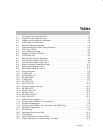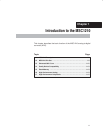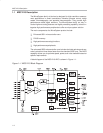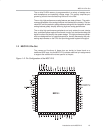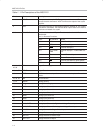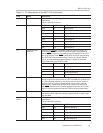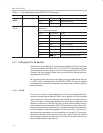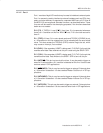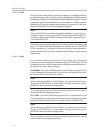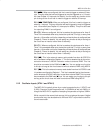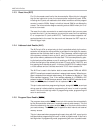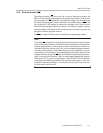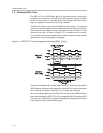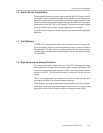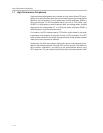
MSC1210 Pin-Out
1-7
Introduction to the MSC1210
1.2.1.2 Port 1
Port 1 consists of eight I/O lines that may be used to interface to external parts.
Port 1 is commonly used to interface to external hardware such as LCDs, key-
pads, and other devices. As opposed to a standard 8052 core, all I/O lines of
the MSC1210 serve optional alternate functions, as described below. These
lines can still be used for the developing purposes, if the functions described
below are not needed.
P1.0 (T2): If T2CON.1 is set (C/T
2), then timer 2 is incremented whenever
there is a 1-0 transition on this line. With C/T2 set, P1.0 is the clock source for
timer 2.
P1.1 (T2EX): If timer 2 is in auto-reload mode and T2CON.3 (EXEN2) is set,
a 1-0 transition on this line causes timer 2 to be reloaded with the auto-reload
value. This also causes the T2CON.6 (EXF2) external flag to be set, which
may cause an interrupt, if so enabled.
P1.2 (RxD1): If the secondary USART is being used, P1.2 (RxD1) is the pin that
receives serial data. Data received via this pin is read using the SBUF1 SFR.
P1.3 (TxD1): If the secondary USART is being used, P1.3 (TxD1) is the pin that
transmits serial data. Data written to the SBUF1 SFR is sent via this pin.
P1.4 (INT2/SS
): This pin has two dual functions. It may be used to trigger an
external 2 interrupt when a 0-1 transition is detected on this line. It is also used
as slave select in SPI applications.
P1.5 (INT3
/MOSI): This pin may be used to trigger an external 3 interrupt when
a 1-0 transition is detected. It is also used as Master Out/Slave In in SPI ap-
plications.
P1.6 (INT4/MISO): This pin may be used to trigger an external 4 interrupt when
a 0-1 transition is detected. It is also used as Master In/Slave Out in SPI ap-
plications.
P1.7 (INT5/SCK): This pin may be used to trigger an external 5 interrupt when
a 1-0 transition is detected. It is also used as serial clock in SPI applications.



